Riot Games' Project A is called Valorant, and it plays like a Counter-Strike killer
Hands on with the technically brilliant - if a little safe - new tactical shooter.
If there can be only one thing taken from my time at Riot Games' vast, lavishly fitted LA campus, it's that the mega-developer is desperately keen to prove they know what they're doing. Riot's pitch for Valorant, its upcoming tactical shooter seemingly named after a kind of industrial carpet cleaning fluid, is one based almost entirely on competence: the game will have the best infrastructure, the best attention to detail, the most committed, communicative ongoing support, and the most rigorously balanced gameplay of anything like it - even if it comes at the cost, seemingly, of character and heart and anything else like it. I've played about four hours and moment-to-moment it really is brilliant, right across the board. Exacting, oddly approachable, tense. The potential is there for Valorant to be the pinnacle of tactical shooters - but it also feels a bit back-to-front. This is a game that exists purely to excel, like the child of two parents who only agreed to conceive so their kid could ace its homework. A game that's very good at doing what other games have already done, but better.
Perhaps that impression is just a result of the way in which Riot has chosen to introduce Valorant. At times it's felt almost comically self-conscious, the developer obsessively anticipating every gripe and grizzle before it comes about. Recall the initial teaser reveal, amidst Riot's multitude of ten-year anniversary celebrations, where lead producer Anna Donlon talked at length about "Project A"'s ambition to eliminate such essential woes as "peeker's advantage", and bless the world with 128-tick servers. Sexy! Dedicated servers are old news, it seems. The schtick of schmucks. Such is the world of games, in this time of subreddit megathreads and so many direct lines from community to creator, that one of the largest developers on earth announces a massive new game by correcting their audience's complaint-jargon before they've even used it.

Still, Valorant is impressive, and as weird as it is to lead with the technical firefighting stuff, so is that. If you buy it, Riot's promises are hugely encouraging. In opening presentations at the studio, developers cited twelve games as inspiration, ranging from the obvious, like Counter-Strike: Global Offensive to Crossfire and Ghost Recon: Future Soldier (curiously, and perhaps cheekily: no mention of Overwatch), and the game itself feels like a surgical piecing together of the best of them. Each game's minor gripe or community grumble extracted and eliminated before it ever came about. To describe it in brief, imagine Counter-Strike in a just slightly more colourful world, with better attention to the little touches, from a nice little ping system to slightly more playfulness in the maps, with things like fixed teleporters allowing for baiting and flanking. Above all though, its standout addition is the highly strategic abilities, each tied to your characters ("Agents") that sit between the rigid grounding of Rainbow Six Siege's Operators and the more cartoonish skills of Overwatch.
The abilities themselves are quite Overwatch though, as much as Riot wants to avoid saying the name. The main difference is the intention: with Valorant the aim is to be a "tactical shooter first", with everything else in service of that. That means all the Agents still deal damage primarily through shooting (disappointingly, with real-world guns, which lead designer Trevor Romleski told me was in order to preserve a sense of inherent, "intuitively satisfying" feel and recognisability), and Agents' abilities are always in service of that, whether it's through zoning, or scouting, or debuffing, or just bluntly walling off entrances. Even the Agents that feel especially out-of-this-world or Overwatch-y, such as the Hanzo-like Sova (renamed from Hunter mid-way through my time there), who can fire off a scouting pulse arrow and a larger ultimate that can pass through walls, still rely on gunplay first - and the same guns as everyone else.
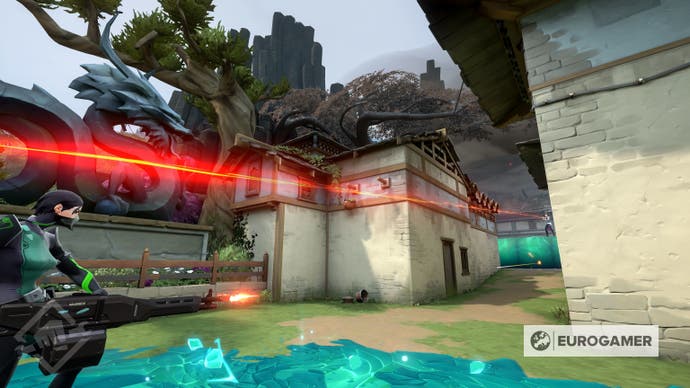
Those guns are also at the centre of the in-game "economy", which is very similar in concept to Counter-Strike again, or indeed the gold-based shopping of League of Legends. Games are played in a first-to-twelve format, which takes a good half an hour, or longer if it's a close one. Matches are attack versus defence, with one team trying to plant a bomb and the other trying to prevent them. The maps, of which there'll be four at launch, Riot says, will have a mix of two or three points to attack and defend. You win a round by either killing all five of the enemy team members or successfully planting a bomb and seeing it through to detonation - or defusing it once planted, if you're on defence. And you play the game in chunks, so you'll be defending for several rounds then attacking for several and, coming back to the economy, it's between these individual rounds where you have a chance to buy weapons, armour and - crucially - more charges of your abilities. That economy is intended to be "team-based", so the better your team does in a round the more money you have to spend before the next one, on those bigger and better guns and the like. In a nice touch that you'd hope would encourage teamwork, you can also ping a weapon from the menu and another teammate can buy it for you with a single click, helping the wealth trickle down from that one ringer on the squad.
As an aside on modes themselves, it's just this one at launch but Romleski did say the team was "interested in exploring" other, faster or more casual modes, and that the core one's length may change slightly if the community deems it necessary. Anna Donlon also added it's "definitely" on the team's list. "The team has been very focused on the competitive part... The questions we've been kind of debating amongst ourselves is: would you hold that back to wait to establish the more casual mode or would you put competitive mode out for the audience we think it's for, start building that audience and start building a community - and then also at the same time be working on something that could be maybe a little bit more broad reaching or something that you would just want to play to decompress? ... Do we wait to launch the game so we have that? I think the answer is probably no. Do we prioritise that work? I think the answer there is probably yes."
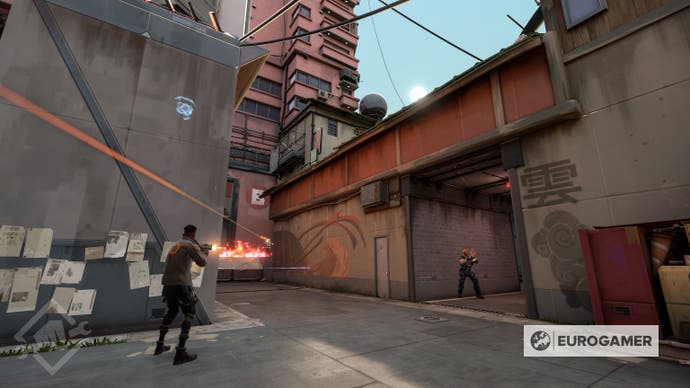
Back to the economy, and successfully gaming it will be what sets the top players apart from the merely skilled. I'd expect deep strategies and metas and all that malarkey to appear pretty fast around what you spend your first bits of cash on and who buys what for the rest of the team. The other side of that, of course, is that I expect the ubiquitous lone wolf players will probably refuse to share. Playing in the cocoon of Riot's in-house "PC Bang", on teams of five who speak the same language - and are happy to even use the game's built-in voice chat in the first place - it would be easy to say that Valorant feels wonderfully tactical, with cooperation and character synergy baked in. The reality is that while, yes, the Agents' abilities synergise quite beautifully at times, I'm sure that's also down to having the right people to play with. The ringer on our team was Riot's David "Phreak" Turley, for instance - a well-known professional League of Legends commentator who mains the support role when he plays. In other words: an unusually supportive, communicative environment off the bat.
Without a squad of chatty friends or some particularly good luck with online matchmaking, it's very easy to anticipate an issue with toxic communication coming from such an incredibly tense, competitive game with both text and voice chat. As much as it might seem like a laboured point, this is something that many see as inseparable from League of Legends, and that Riot has already had to work enormously hard at combating. It's arguably failed to really fix the issue, ten years on, and that's despite League only featuring text chat in-game. Voice chat's issues, most notably with the exclusionary effect it has on female players in particular, have been well documented. When I asked about this, game director Joe Ziegler promised to draw from Riot's "centralised efforts" at battling the issue and apply some "specific salves around certain features," but wouldn't go into more detail during our chat. You can read more of his thoughts in our full interview with Ziegler and Valorant's lead producer, Anna Donlon, but a suggestion would be to axe the voice and text chat altogether and go with Apex Legends' nuanced ping system (something League of Legends itself made good early strides with). It's also worth noting Riot's already promised to improve on the pings they have. As Romleski put it, the implementation I saw was "not the grand vision" of the ping system: "we want to make sure players are comfortable if they don't use voice or they don't [feel confident in] calling out all the right information at the correct times." Fingers crossed.
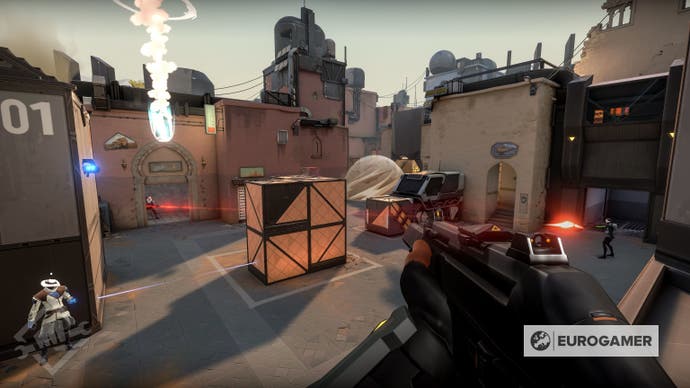
Toxicity notwithstanding, Valorant's intense competitiveness is also one of its greatest strengths. If you do get a good team, or just a good group of pals to play it with, I found there was a remarkable thrill to most of the rounds I played, especially so when we swept ahead to lengthy leads before almost throwing matches at the final round, or clawed matches back from the brink. Games frequently built to a natural climax of tension, and some higher-level plays - last-gasp, "clutch" one-versus-three kills or team-wide strategies coming together - can be incredibly satisfying. The game feels built to surface those particularly vivid, Rainbow Six Siege-style moments in particular, when there's one player left and somehow they pull it off, turning things around with nothing but spit and hope and a little John McClane gumption.
It's hard to pin down a single, quantifiable thing that brings that sort of heightened tension about, but Riot would argue it's all in the basics. To go right back to their initial pitch, this is a game built on competency first, and apparently what that means is a tangible difference to all the little things. The art team emphasised their creation of a "clean zone", for instance, where anything within the playable height range of the maps was slightly more muted and stripped back, whilst the areas above (roofs, skylines, and the like) was allowed to pop. Other elements are illustrated in accordance with a "readability hierarchy", where Agents stand out above the playable space, which stands out above the visible parts of your gun, which is above the non-playable stuff altogether. Cover, on the maps themselves, is allocated with great precision, forming a curated spaghetti of "long lanes" of clear sniper paths and intentionally obstructed sightlines. All characters have equal-sized hitboxes. There's tagging, and specific walls you can shoot through, and on and on and on it goes with a seemingly infinite string of minutiae that Riot has thought about (and talked about) at exhaustive length.
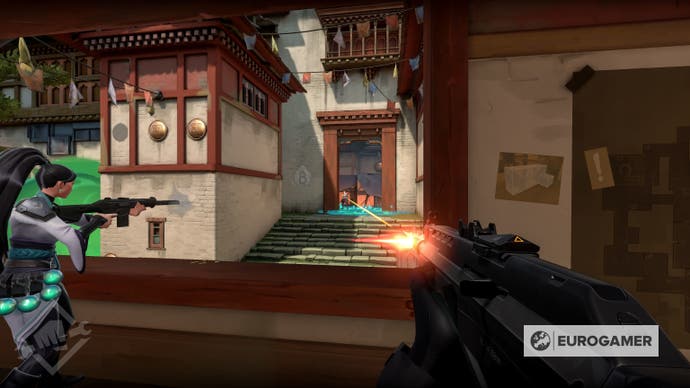
Above all of that, though, is a technical effort that on paper sounds quite remarkable. As we all know by now, Riot boldly claims to have eliminated peekers' advantage, something that I'd expect no-one but the most ardent of CS:GO nerds to have heard of or cared about until now, but makes a demonstrable difference to how long-term players will play the game. In most shooters like Valorant, you can briefly pop out from behind a wall to "peek" at what's going on and quickly dart back with the shimmy of a button, and do so with no risk of getting picked off, because the delay between you performing the peek and the enemy seeing you is too high. You're back behind the wall before it's humanly possible to react and shoot. It's become a time-old part of playing tactical shooters at a decent level, but in Valorant it no longer flies. Riot seems to have tackled this entirely by cracking open one of those League of Legends coffers, that I imagine they have lying around the place, and simply throwing vast amounts of money at the problem.
To get briefly technical, as I understand it Riot claims to have struck a deal with internet service providers that will route internet traffic directly from you to Riot's servers, via service called Riot Direct, which it says means an average of 35ms ping for at least 70 percent of players at launch. I can feel the eyes glazing over, don't worry, so in basic terms: much less lag, regardless of where you are. At the top end of the scale, competitive players and streamers that have been known to move across the continent of North America to get physically closer to servers, so that their ping is low enough for high-level play, can breathe a sigh of relief. For myself and most others, it's just another quiet reassurance.
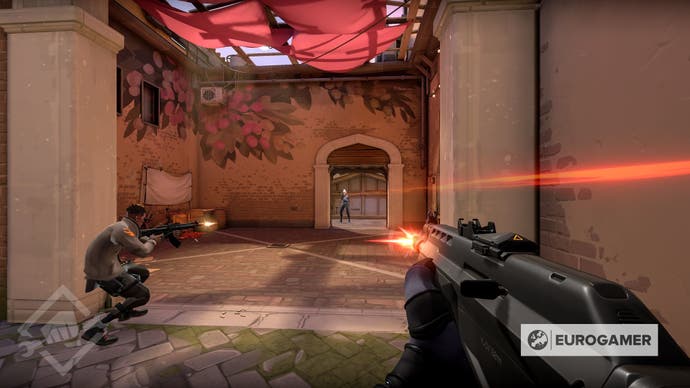
As well as the peeker-busting 128-tick servers and promise of super-stable ping for (almost) everyone, Riot's also built Valorant to be playable on a huge amount of machines. David Strailey, who works at Riot in the netcode and software engineering side of things for Valorant, said that a $120, ten-year-old laptop with an i3-370M CPU (which equates to 88 percent of current League of Legends players) would be able to play Valorant at 30 frames-per-second, while 66 percent of LoL players could play it at 60. Slides were used to show off some apparently remarkable strides to improving the accuracy of hit registration. Riot even showed footage supporting a promise to upscale players with low FPS and lag, through some special server magic, so that even if they jittered about and jumped all over the place on their own screen their movement would appear entirely smooth on yours.
Wind all that back into the important stuff - the gameplay - and it raises interesting questions around where true originality and fun really comes from. Sometimes players coming up with clever ways to work around things that are technically problems or imbalances can actually lead to the most interesting gameplay. To go back to peekers once again, in Romleski's words: "Let's say we're playing against somebody who's peeking, you might 'jiggle peek' yourself as like a counter-way to deal with it, and I think it's good that players are being ingenuitive and trying to come up with ways to deal with it." The difference in Valorant, he says, is that Riot wants to build the "tools" for breaking sightlines and using space to your advantage into the game intentionally, so you can "find your own way to break that puzzle of some people holding that position," rather than relying on server delay to do it for them.
Valorant Preview Gallery
The lasting effect of all of this technical humble-bragging is a sort of congratulatory haze. It's easy to be talked into a stupor by the sheer scale of what's being done on paper, and the number of promises made and the promising signs - namely its reputation in the League of Legends community for lengthy, regular patch notes that border on overcommunication, and also lots and lots of money - that Riot can actually deliver.
There are things I'd certainly like to see it improve. A more proactive approach to toxicity is certainly one. Another, just as important, is a lack of any real character showing through. When I played Valorant, there was a pesky audio bug that meant none of the Agents said anything either in the menus or the matches. A bug is just a bug, of course, but it served as a pretty apt illustration of Riot's priorities at this point in time. Would the game have been put out in front of the press had aiming down sights been bugged, or the in-game economy? You'd imagine not. Art design, character, and lore are all proudly explained by Riot as being in service to the gameplay. It means that gameplay is indeed exceptional, but the importance of window-dressing shouldn't be underestimated. Not when your rivals are Blizzard, as much as Valve. For all the talk of Overwatch's competitive scene, the way it rose to such wide-ranging prominence, through its abundance of character and humanity, shouldn't be forgotten. For now, as the game approaches its beta, that's the one area where Valorant is lacking. The game itself remains a big, expensive, promising promise.
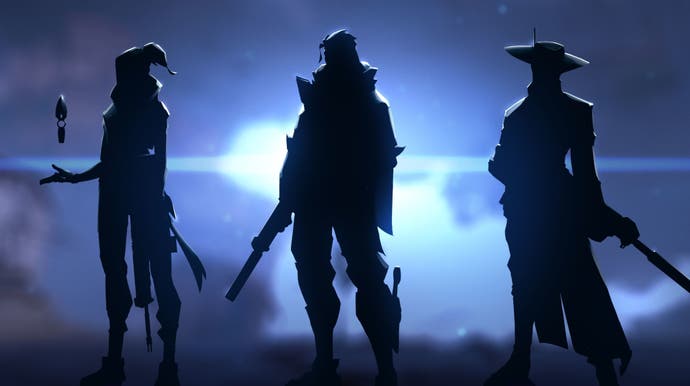


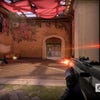


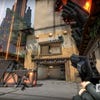
















.png?width=291&height=164&fit=crop&quality=80&format=jpg&auto=webp)



